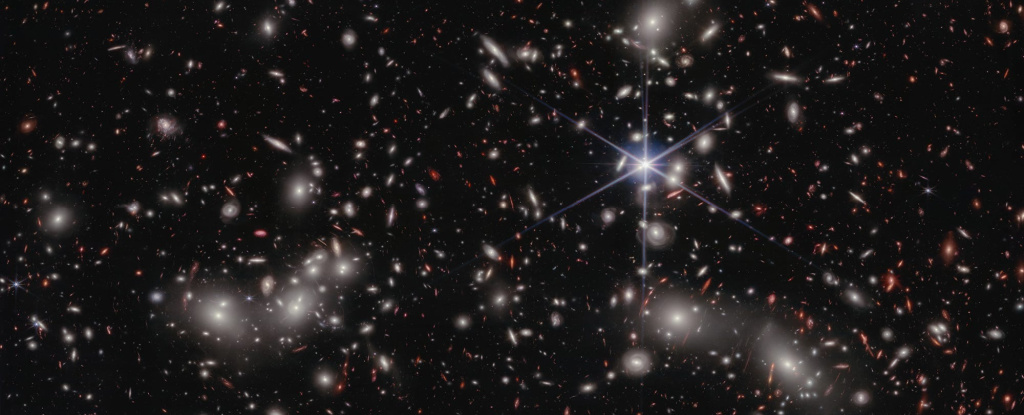Scientists used a galaxy cluster that warps the fabric of space-time like a magnifying glass, helping them discover two of the most distant galaxies ever observed.
The team of astronomers at Penn State used NASA’s James Webb Space Telescope to search for distant galaxies that were hiding behind Pandora’s Cluster, or Abell 2744, a group of galaxies located 3.5 billion light-years away, according to Space.com.
The sheer mass of the galaxies within Pandora’s Cluster creates a cosmic visual effect called a gravitational lens, which warps the fabric of space-time to magnify light that lies beyond, Penn State said in a press release about the team’s findings.
Using this natural magnifying glass, the researchers were able to detect two never-before-seen galaxies behind the megacluster, 33 billion light-years away from Earth.
Only three other galaxies have ever been detected so far away, but these two galaxies are much larger, the research team said.
These two distant galaxies are also special because of their unique shape. Most far-away galaxies look like a dot in our images, but one of these is shaped like a “peanut” and the other like a “fluffy ball,” the team said.
The scientists aren’t quite sure how the galaxies became different shapes even though they formed from similar materials.
“The light from these galaxies is ancient, about three times older than the Earth,” said Joel Leja, a member of the Penn State research team.
“These early galaxies are like beacons, with light bursting through the very thin hydrogen gas that made up the early universe,” Leja added.
“It is only by their light that we can begin to understand the exotic physics that governed the galaxy near the cosmic dawn.”
This article was originally published by Business Insider.
More from Business Insider:

Dr. Thomas Hughes is a UK-based scientist and science communicator who makes complex topics accessible to readers. His articles explore breakthroughs in various scientific disciplines, from space exploration to cutting-edge research.








